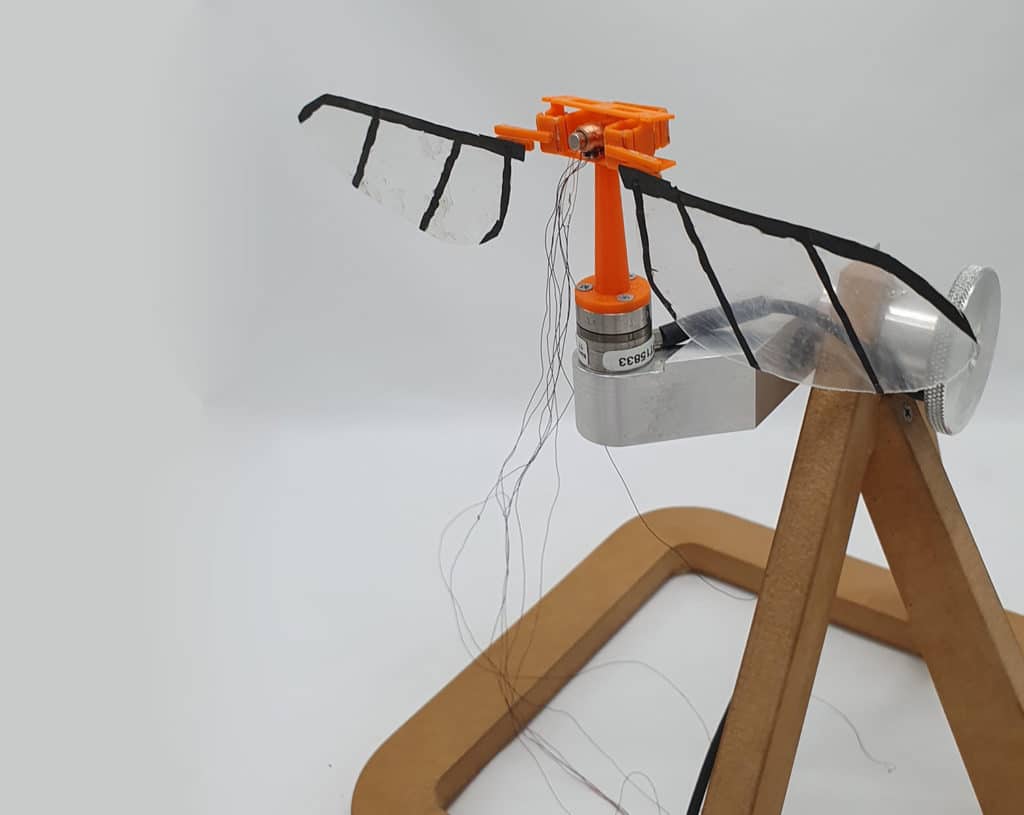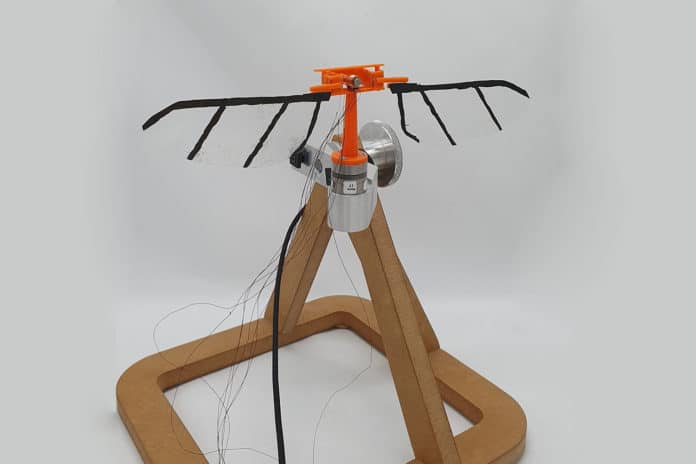Until now, drones have been mostly aerial robots that are propelled like airplanes or helicopters. More ambitious designs, emulating birds that fly flapping their wings, could offer key advantages over ordinary drones – including improved efficiency, safety, and agility.
Researchers from the University of South Australia (UniSA) are designing a dragonfly-inspired drone that might match the insect’s extraordinary skills in hovering, cruising, and aerobatics.
The design is the work of a team of students from the UniSA led by Professor Javaan Chahl, who spent part of the 2020 COVID-19 lockdown designing and testing prototype flapping-wing parts. The students worked remotely on the project from their respective homes, solving mathematical formulas, digitizing stereo photographs of the insect wings into 3D models, and using spare rooms as rapid prototyping workshops to test parts of the flapping-wing drone.

“Dragonflies are supremely efficient in all areas of flying. They need to be. After emerging from underwater until their death (up to six months), male dragonflies are involved in perpetual, dangerous combat against male rivals,” Prof Chahl says. “Mating requires an aerial pursuit of females, and they are constantly avoiding predators. Their flying abilities have evolved over millions of years to ensure they survive.“
In addition, dragonflies can turn quickly at high speeds and take off while carrying more than three times their own body weight. Furthermore, they are one of the most effective predators in nature, chasing and capturing their prey with a 95% success rate.
To make their prototype, the UniSA team modeled the dragonfly’s unique body shape and aerodynamic properties to understand why they remain the ultimate flying machine. They reconstructed 3D images of the wings and studied the wing geometry of 75 different dragonfly species using a newly-developed optical technique.
Dragonfly wings are long, light, and rigid with a very high aerodynamic performance. Their long abdomen has also evolved to serve many purposes. It houses the digestive tract, is involved in reproduction, and helps with balance, stability, and maneuverability.
Flapping-wing drones are still very much in early development. Researchers believe that a dragonfly-like drone could perform many tasks, such as collecting up and delivering awkward and unbalanced loads, operating safely near people, exploring delicate natural environments, and running long surveillance missions.
